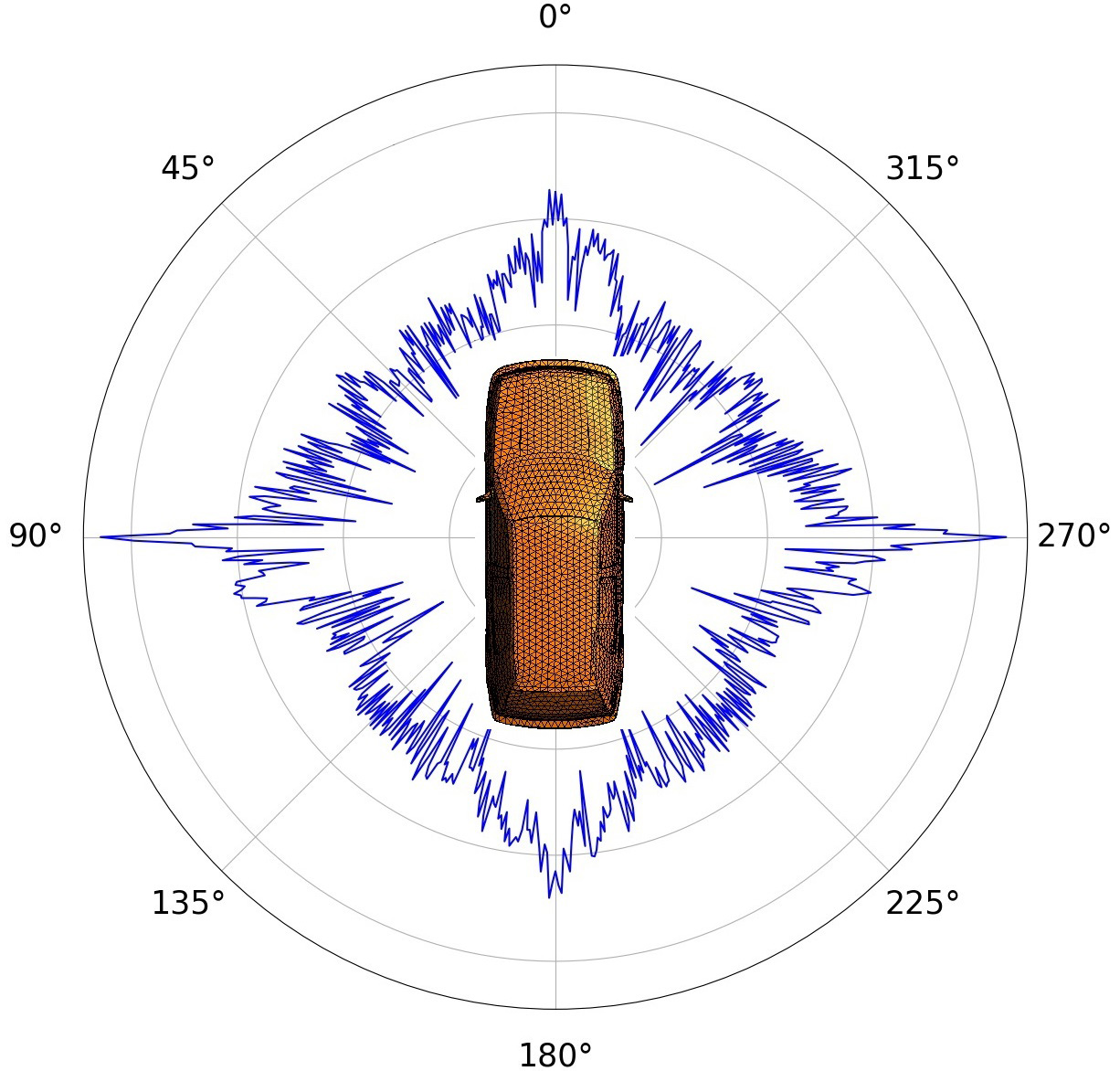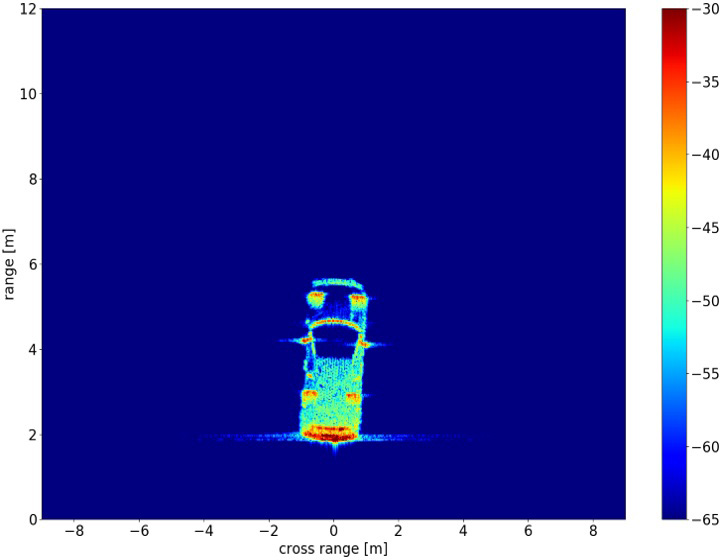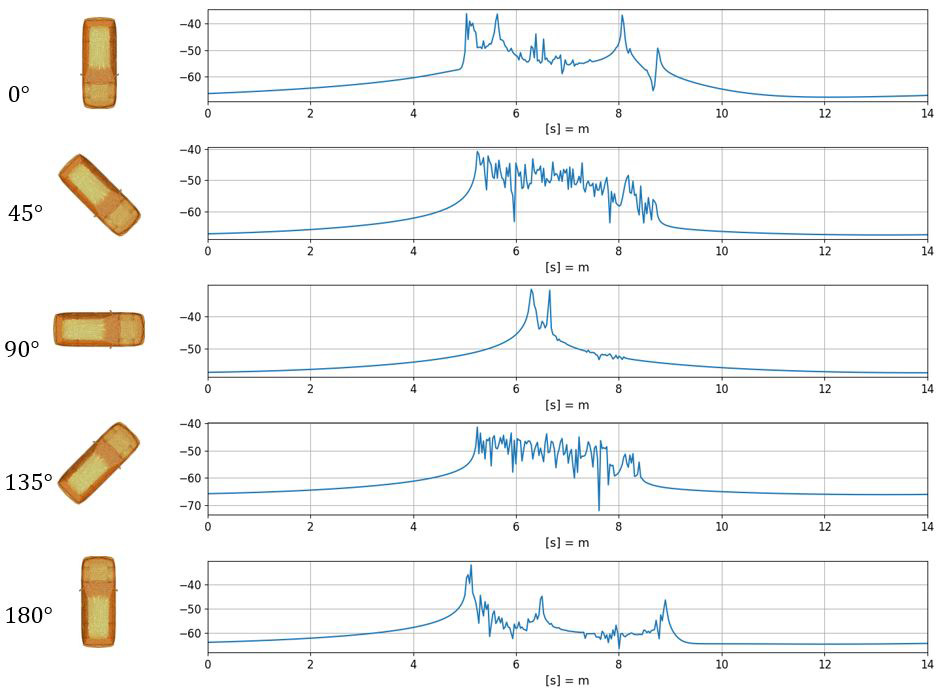EM simualtion of dynamic traffic scenarios
With the simulation tool GOPOSim a software solution for the fast, electromagnetic simulation of time-dynamic processes is being developed at Fraunhofer FHR. The tool makes it possible to test the function of an automotive radar sensor with synthesized radar data outside of time-consuming test drives.
Automotive radar sensors are an essential component in numerous driver assistance systems already in use today and play a central role for the development of autonomous driving, alongside of LIDAR sensors and camera systems. The used radar sensors have to be able to detect and resolve the environment. The reliable operation of these radar sensor systems can be examined using hardware-in-the-loop or software-in-the-loop tests based on simulated data.
To be able to determine the properties of the radar signatures generated by road users, traffic scenarios have to be modelled and analyzed from an electromagnetic point of view. The software GOPOSim, which uses a deterministic analytical ray tracing approach, allows for the simulation of time-dynamic traffic scenarios. To achieve efficient modelling and short simulation run-times, CAD models of the road users positioned in the corresponding traffic scene are loaded during the run-time and transferred into a suitable scattering center model. This way, GOPOSim calculates the radar signatures of the traffic scenarios in a time-discrete manner, considering the physical properties. The time-dependent course of the scene to be
simulated is described with a corresponding trajectory of the simulation objects. To ensure a continuous course of the simulation objects' location, the trajectory is defined in the three-dimensional reference system with a starting position, a vectorial starting speed, and any number of overlaid vectorial accelerations, each valid for a set time interval. For a moving vehicle, the wheels are described separately. The same trajectory is assigned to them as the associated vehicle. In addition, the wheels receive an overlaid rotating trajectory to account for micro-Doppler effects in the electromagnetic simulation of the traffic scene. The micro-Doppler signature allows for the classification during the later signal processing of the data.
Simulation Approach
The simulation of the time-dynamic processes is based on the ray tracing algorithm and on physical optics (PO). This way, the realizable ray paths are generated for each discretized time step according to a deterministic analytical ray tracing approach. For the calculation of the ray paths, multipath propagation can be taken into consideration up to a certain degree. This makes it possible to model interactions of the simulation objects that occur as reflections on road surfaces, for example. The scattering behavior of the simulation objects is calculated for the run-time based on the PO.
Applications
GOPOSim is primarily designed for the simulation of dynamic processes. The simulation results can be output in different formats. For instance, after the raw data has been processed, the received radar signal can be processed as a range-Doppler map, as a Doppler signature, or as an HRR (high range resolution) profile. Figure 2 shows an ISAR (inverse synthetic aperture radar) image of a Golf III, while figure 3 shows different HRR profiles of the vehicle depending on the viewing angle. By using the RTS (radar target simulator) format, the radar target simulator ATRIUM® developed at Fraunhofer FHR is fed, for example. Thus, critical traffic scenarios are played to a radar sensor via a suitable antenna arrangement. For this, the radar target simulator analyzes the signal emitted by the radar sensor, synthesizes the corresponding response to the scene, and sends it back to the radar sensor.
In addition, the software makes it possible to calculate the monostatic as well as the bistatic RCS (radar cross section) of objects available in a CAD model and visualize these as a function of the angle. Figure 1 shows the RCS of a Golf III with a resolution of 720 angle steps 360° around the vehicle. Additional interfaces, e.g. for »software-in-the-loop« simulations will be implemented at Fraunhofer FHR in the future. The electromagnetic simulation of time-dynamic processes, however, requires large computing capacities and enormous computing times.
The ability to use an EM simulation software as a Co-simulation for traffic simulation requires a computing speed that is at least as fast as the real-time sequence of the scene (real-time simulation). This requirement is currently already being fulfilled for traffic scenarios with a limited complexity. GOPOSim will be further accelerated in the future using suitable GPU programming in order to ensure the fulfillment of the real-time requirement for complex scenes as well.


